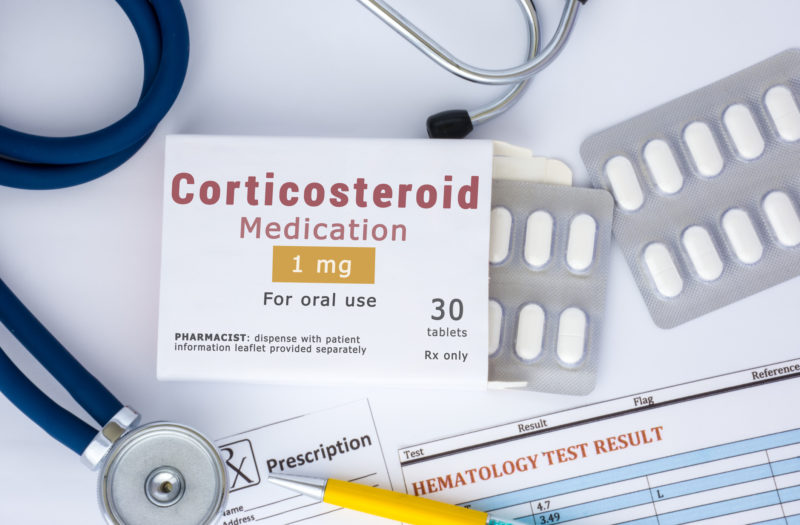Many rheumatoid arthritis (RA) patients use corticosteroids (also known as glucocorticoids, or steroids for short) to control flares or manage their disease. Although these drugs work well to quickly decrease inflammation, they carry a long list of possible side effects like weight gain, high blood sugar, mood changes, an increased chance of infections, and osteoporosis (thinning bones). As with most medications, such problems are generally dose-dependent, with the risks being greatest for those who take higher doses for longer periods of time. That’s why rheumatologists aim to keep patients who require corticosteroids on the lowest effective dose for the shortest time possible.
None of that has changed, but a new study serves as a reminder that even low doses of these drugs aren’t totally risk-free. The study, which was published in the journal Rheumatology, found that RA patients who take low doses of glucocorticoids are 59 percent more likely to have a vertebral fracture than those who aren’t using these drugs.
Researchers analyzed the data of adults who were diagnosed with RA between 1997 and 2017 to learn whether oral corticosteroid use is associated with osteoporosis-related fractures of the forearm, hip, humerus (the arm bone between the elbow and shoulder), pelvis, ribs, and vertebrae. The patients were grouped based on whether their glucocorticoid use was current (within less than six months), recent (within the past seven to 12 months), or past (more than a year since their last prescription.)
Of the 15,123 patients in the study, 1,640 had an osteoporosis-related fracture during the study period. Overall, current glucocorticoid users were not any more likely to have an osteoporosis-related fracture (compared to others who had used glucocorticoid in the past). However, vertebral fractures stood out as an exception.
Not only was taking a glucocorticoid associated with a significantly greater risk of this type of spinal fracture, but the length of drug use didn’t seem to matter. Current users faced the same increased risk, regardless of whether they had been taking the medication for years or only a short period.
Everyone in the study was at least 50 years old. “Low-dose” corticosteroid use was defined as 7.5 mg or less of prednisolone equivalent per day.
It’s not clear why the risk of vertebral fractures would go up when fractures in other body parts did not. It’s also worth noting that while an 59 percent increased risk sounds like a lot, it translates to two additional fractures per 1,000 RA patients.
Still, “clinicians should be aware that even in RA patients who receive low daily glucocorticoid doses, the risk of clinical vertebral fracture is increased,” the authors concluded.
Track Your Symptoms with ArthritisPower
Join CreakyJoints’ patient-centered research registry and track symptoms like fatigue and pain. Learn more and sign up here.
Abtahi S, et al. Low-dose oral glucocorticoid therapy and risk of osteoporotic fractures in patients with rheumatoid arthritis: a cohort study using the Clinical Practice Research Datalink. Rheumatology. July 13, 2021. doi: https://doi.org/10.1093/rheumatology/keab548.
Laday J. Even low-dose glucocorticoids greatly increase vertebral fracture risk in RA. Healio. July 27, 2021. https://www.healio.com/news/rheumatology/20210727/even-lowdose-glucocorticoids-greatly-increase-vertebral-fracture-risk-in-ra.






